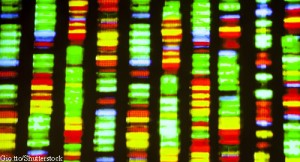 Through gene analysis, researchers have found different types of interferons in systemic lupus erythematosus (SLE) tissues and cells, such as skin and synovium. The analysis, which probed 2,000 gene expression datasets from SLE patients, specifically investigated modules of genes derived from the downstream interferon gene signature. It found enriched downstream interferon signatures that were predominately from IFNB1. These interferon signatures were higher when compared with the expression of downstream interferon signatures in kidneys with lupus nephritis, according to the study, published April 23 in Nature Communications Biology.1
Through gene analysis, researchers have found different types of interferons in systemic lupus erythematosus (SLE) tissues and cells, such as skin and synovium. The analysis, which probed 2,000 gene expression datasets from SLE patients, specifically investigated modules of genes derived from the downstream interferon gene signature. It found enriched downstream interferon signatures that were predominately from IFNB1. These interferon signatures were higher when compared with the expression of downstream interferon signatures in kidneys with lupus nephritis, according to the study, published April 23 in Nature Communications Biology.1
SLE is associated with the excessive production of interferons and autoantibodies against nucleic acids. Previous research has found the activation of the type I interferon system in SLE affects the innate and adaptive immune systems.2
This new investigation was led by Michelle D. Catalina, PhD, senior scientist of systems immunology, and colleagues at AMPEL BioSolutions LLC, Charlottesville, Va. The researchers used the specific and unique gene signatures of multiple interferons to better understand the roles of various interferons in lupus pathogenesis, as well as to gain insight into the appropriate use of interferon signature(s) as a possible biomarker.
These results add to previous findings that the interferon gene signature is readily detectable in patients with inactive disease and does not change synchronously with disease activity. Dr. Catalina says, “The interferon gene signature has been known to be associated with SLE for more than 15 years. There are, however, numerous interferon species, and it has remained unclear which of the various interferons is contributing to lupus pathogenesis.”3,4
Understanding the specific interferons involved in lupus and the roles of each in disease manifestation may provide essential information to safely and effectively target these molecules for treatment, she acknowledges. Example: It’s known interferons cannot only contribute to disease pathogenesis, but also are important in host defense against a variety of viral pathogens.
Type 1 & 2 Interferons
For this investigation, interferon gene signature types were identified in SLE blood samples, using gene set variation analysis with IFNA2, IFNB1, IFW1, IFNG, TNF, IL12 and interferon core signature genes. The goal was to determine the relative enrichment of these signatures in the whole blood or peripheral blood mononuclear cells of SLE patients and healthy controls.
Heatmap visualization of gene set variation analysis enrichment scores showed patients with highly enriched signatures for IFNA2, IFNB1, IFNW1, IFNG and the interferon core. Most SLE patients were separated from controls by these scores. In most SLE patients, the gene set variation analysis enrichment scores were the strongest for the type I interferons compared with IFNG, TNF or IL12. However, some SLE patients had no type 1 or type 2 interferon gene signatures, but did possess a TNF or IL-12 signature.

